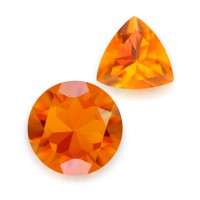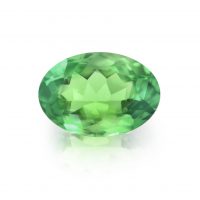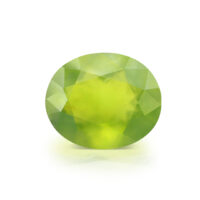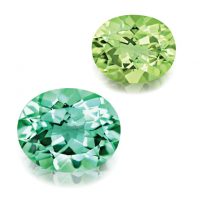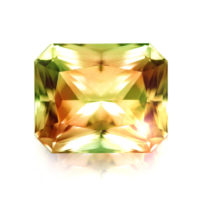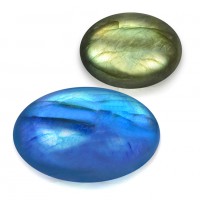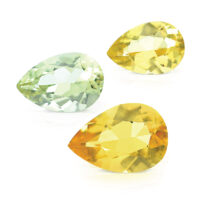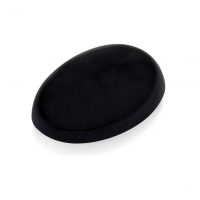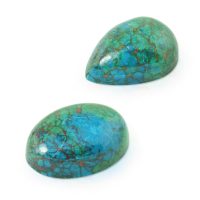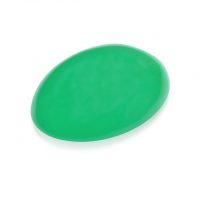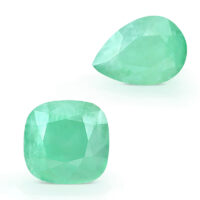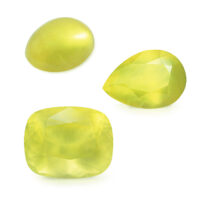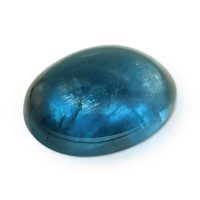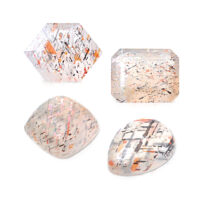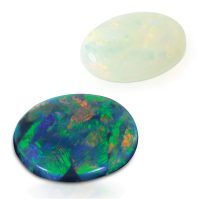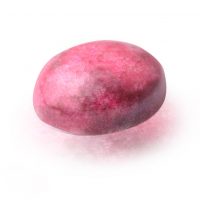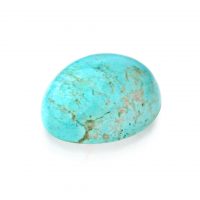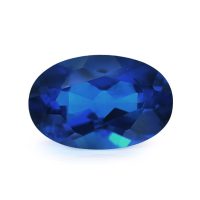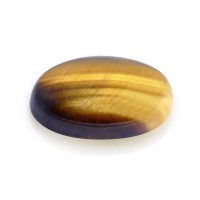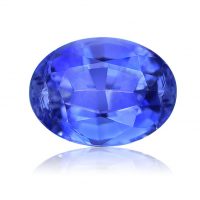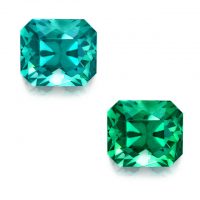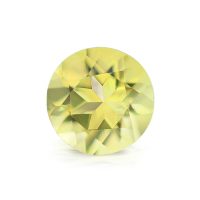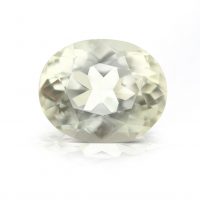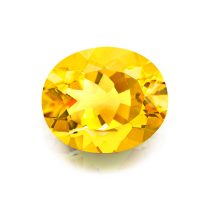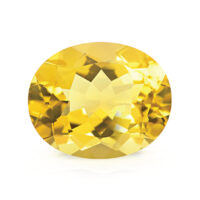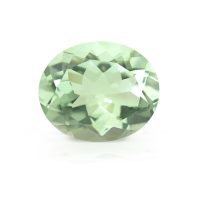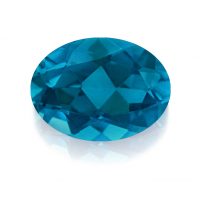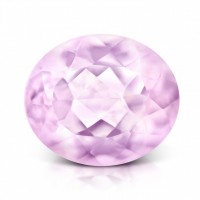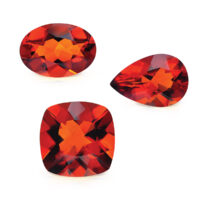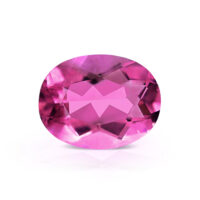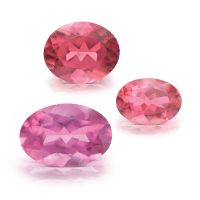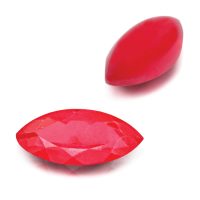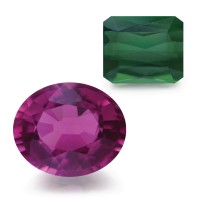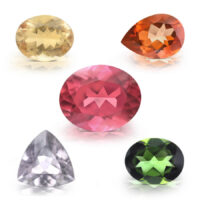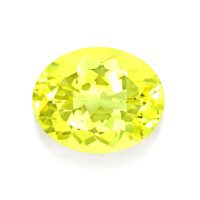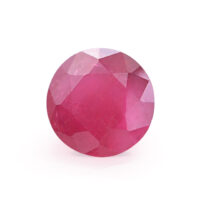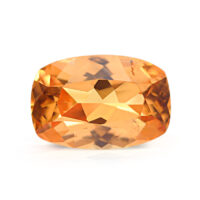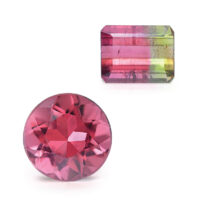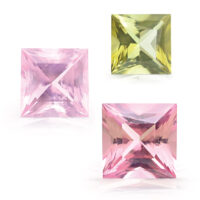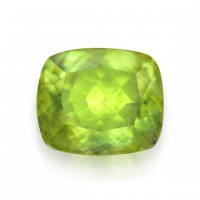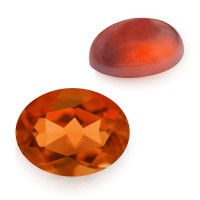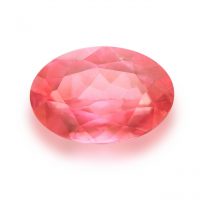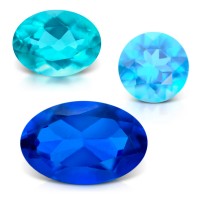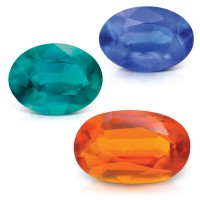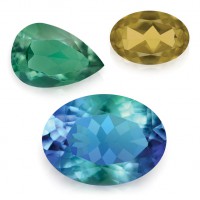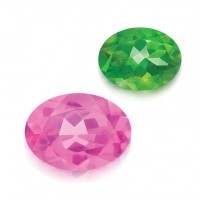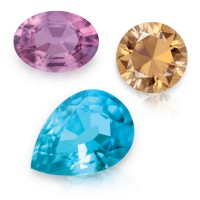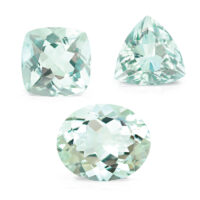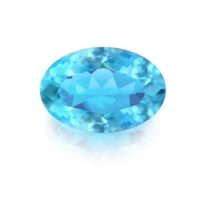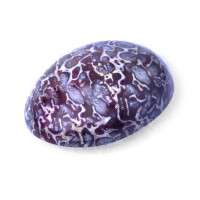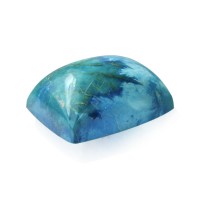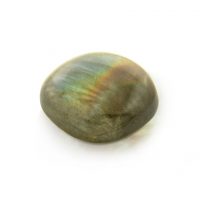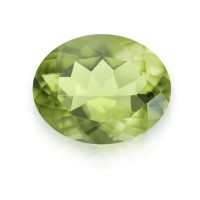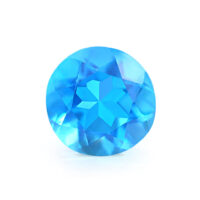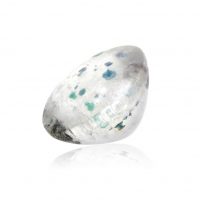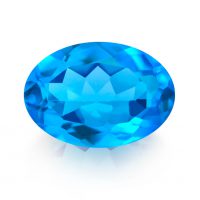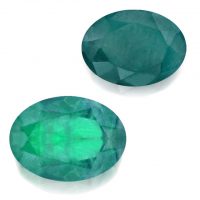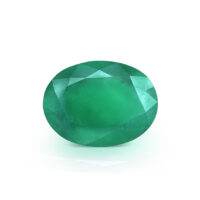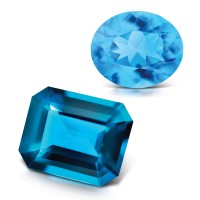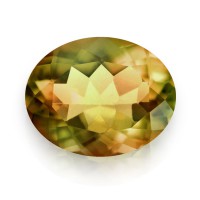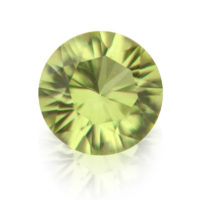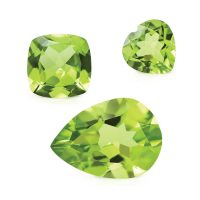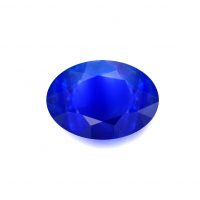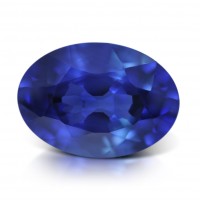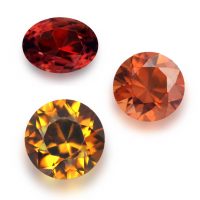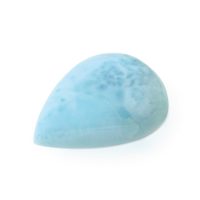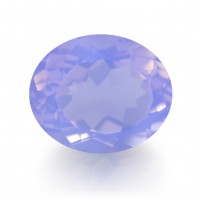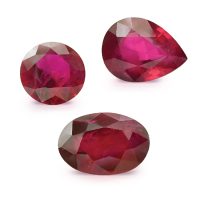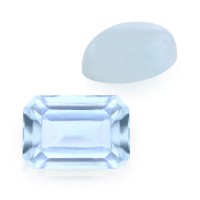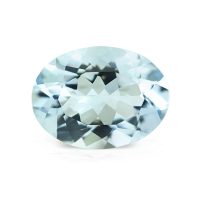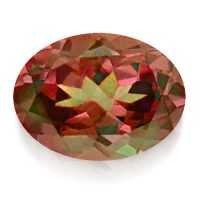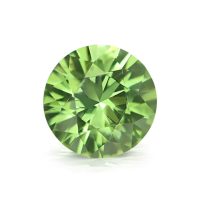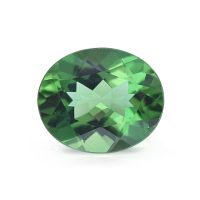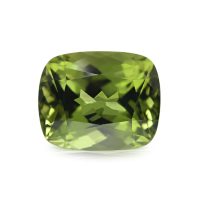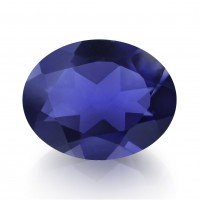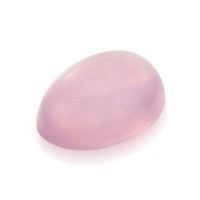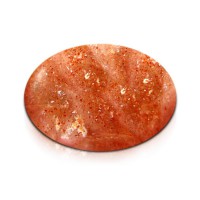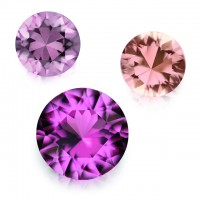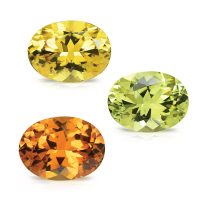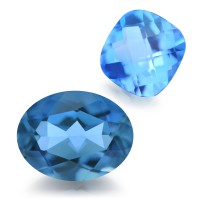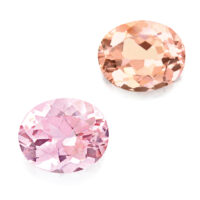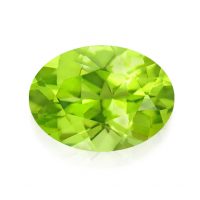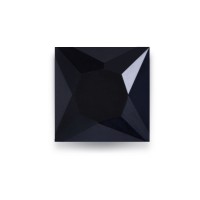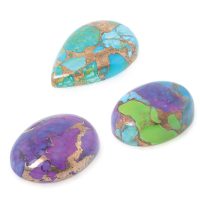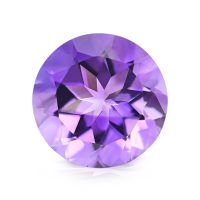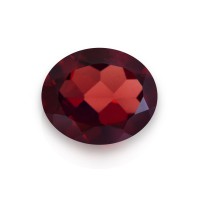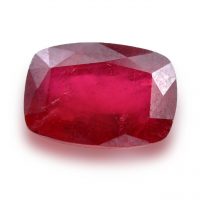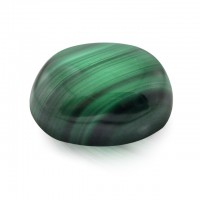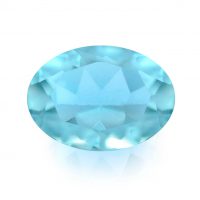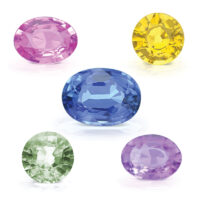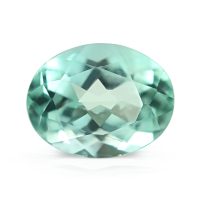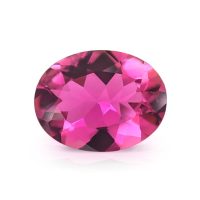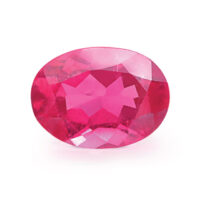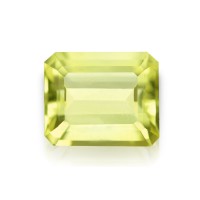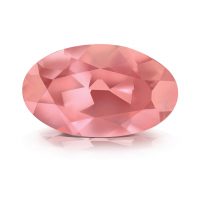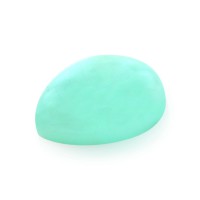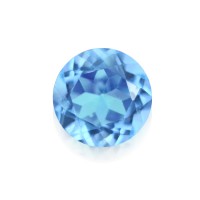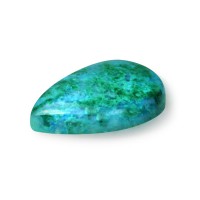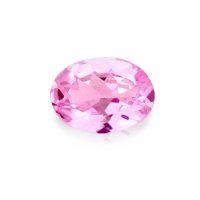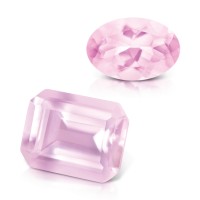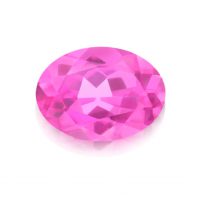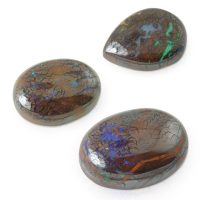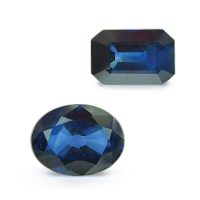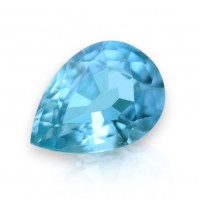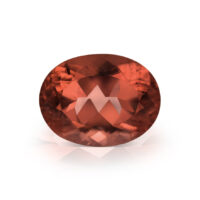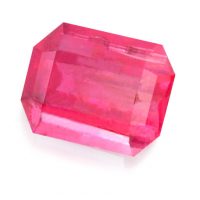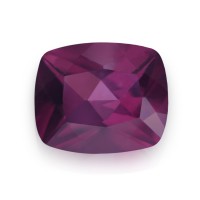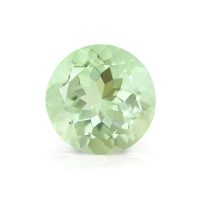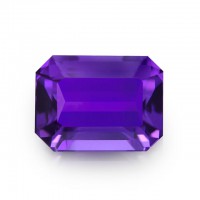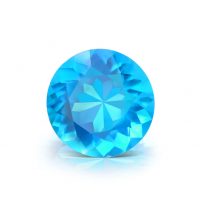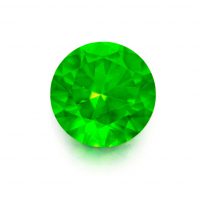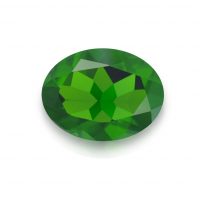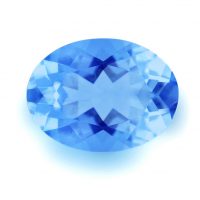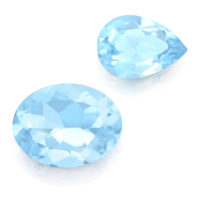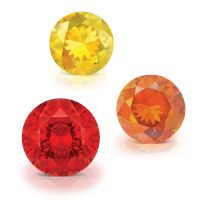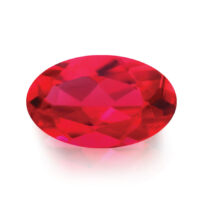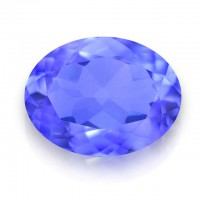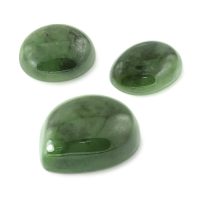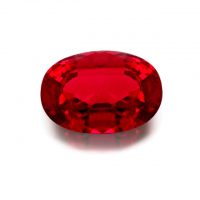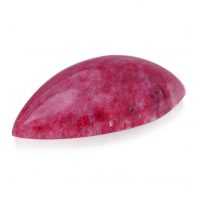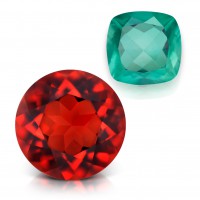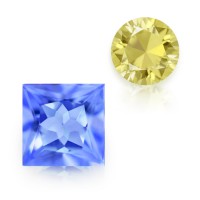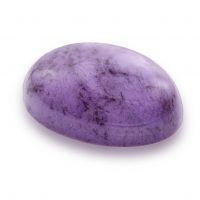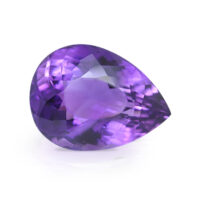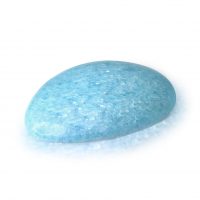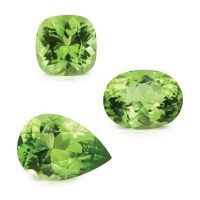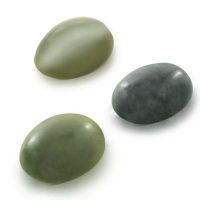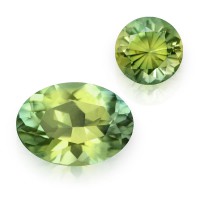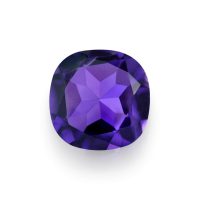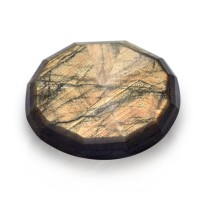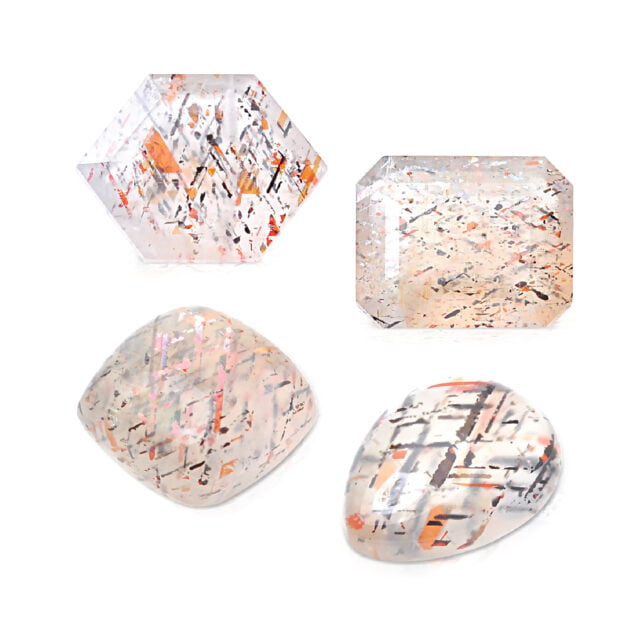

Exclusively from the Northern Territory’s remote Harts Range, Australian Lattice Sunstone’s signature beauty is due to the exceptional and rare triple combination of fiery-orange aventurescence, delicate shimmering adularescence, and distinct midnight black latticing, which can occasionally display colorful, rainbow-like iridescence. While Australian Lattice Sunstone is incredibly beautiful, its striking lattice patterns, parallel lines and triangular inclusions are impossibly rare in nature, but also totally reliant on precise orientation during optimal lapidary. With only half a percent gem-quality, Australian Lattice Sunstone is extremely limited, and not readily available in jewelry collections.
Hardness 6 - 6.5
Refractive Index 1.518 - 1.540
Relative Density 2.58
Enhancement Stabilized (Colorless Resin)
Beauty
Sister gem to Labradorite and Moonstone, Australian Lattice Sunstone is also known as Rainbow Lattice Sunstone. While beautiful aventurescence defines Sunstone, adularescence is typically synonymous with Moonstone, and iridescence, Labradorite. In fact, the metallic iridescence in Labradorite is aptly called ‘labradorescence’.
Aventurescence dates to an 18th century Venetian glassworks, when copper filings accidentally fell into a batch of molten glass. According to legend, the workers exclaimed, “a ventura”, which means ‘by chance’, on noticing their glass with sparkles. Aptly coined the ‘Sunstone Effect’ or schiller, this beautiful sunlight phenomenon is caused by glittering, metallic inclusions reflecting light multiple times as it travels through the gemstone. ‘Schiller’ is derived from the Old High German ‘scilihen’, which means to blink or wink. Named for a Moonstone variety (Adularia) found in the European Alps, Adularescence is a deft whitish-sheen caused by interference phenomena (scattering of light by thin crystalline layers). From the Greek ‘iris’, meaning ‘rainbow’, iridescence is a rainbow-like color effect caused by a gems’ structure breaking up light into its spectral colors, which change depending on the angle of observation.
Its characteristic aventurescence aside, Sunstones’ key value determinant is transparency. Semi-transparent with a colorless body color, Australian Lattice Sunstone’s aventurescence is caused by bright, citrus-hued hematite platelets, with smaller inclusions resulting in a subtle orangish-glow, and larger inclusions affording an attractive, glittery appearance. The lattice patterns are caused by the lamellar twinning (twinning parallel to crystal planes) of orangey hematite and black magnetite inclusions. Mainly forming equilateral triangles, triangular shapes, and elongated blades, often with triangular terminations, like book pages, these occur within planes at different levels. Importantly, Australian Lattice Sunstone’s distinguishing latticing is critically dependent on correct crystal orientation when cut; if not exact, its coveted lattice patterns will be negated, and the gem indistinct from other Sunstones. While its magnetite usually has a black metallic sheen, when oxidized to hematite, iridescence sporadically appears on the latticing. As it’s iridescence is dependent on cracks allowing oxygen to enter the crystal, highly iridescent crystals are usually unsuitable for cutting. Not always present, this iridescence is also very dependent on the angle of observation; aventurescence is often visible from one direction, with the colorful latticing only appearing when the lighting angle is changed.
Due to its quality, Australian Lattice Sunstone can be both faceted or polished ‘en cabochon’ in a variety of attractive shapes that beautifully captures its stunning optical phenomena, distinctive latticing, and valued transparency. Australian Lattice Sunstone is optimally cut by experienced lapidaries, with a superior mirror-like polish affording an excellent luster. When cut as cabochons, Australian Lattice Sunstone is carefully polished into attractive smooth domes with an excellent finish, proportion and shape. When faceted, Australian Lattice Sunstone also maintains a high-polish/luster, as well as an attractive overall appearance (outline, profile and proportions).
A silicate mineral family occurring in igneous rocks, ‘Feldspar’ is derived from the German ‘feldt spat’, meaning ‘Field Stone’, due to its ability to enrich the soil with plant nutrients. Prized for their beautiful optical phenomena, Feldspars are distinguished by their calcium, potassium, and sodium content/ratio, dividing into two subgroups: Plagioclase Feldspars (Albite – Anorthite) and Alkali/Potassium Feldspars (Orthoclase – Albite). While the Plagioclase group includes most gem varieties, gems in the Alkali group share the same chemical composition, but are distinguished by their crystal structure. Both Orthoclase and Plagioclase have Sunstone (and Moonstone) varieties, with these names referencing the gems’ visual appearance, rather than their chemical composition/crystal structure. Named for its semblance to the sun, Sunstone’s most important attribute is its defining aventurescence. Sunstone is typically bicolor, colorless, green, orange, pink, red, or yellow, with aventurescence caused by tiny platelets of copper, goethite, hematite, ilmenite, and/or magnetite. Discovered in 1985 by Darren Arthur and Sonny Mason, Australian Lattice Sunstone is approximately 75 percent Orthoclase and 25 percent Albite. In 1989, Australian Lattice Sunstone was identified by the Gemological Institute of America (GIA), who described it as, “a beautiful new form of Orthoclase”. Interestingly, Feldspars displaying similar phenomena were unearthed in Statesville, North Carolina in 2017. Sunstone is predominately mined in India, Madagascar, and the USA. Considering its name, it’s not surprising that its various legends connect Sunstone to the sun. Like the sun, Sunstone was thought to represent energy, light, power, and warmth. For example, Native Americans used Sunstone in medicine wheel ceremonies to connect with the Sun’s healing light. While for ancient Indians, Sunstone was believed to be an actual piece of the sun, endowering insight, good health, power, and prosperity. Sunstone also was once coveted for its purported ability to guide its wearer through the journey of life. According to one story, Pope Clement VII (1478 – 1534) possessed a Sunstone with a golden spot, that moved across the gem in motion with the sun.
Rarity
Always scarce, especially in fine qualities, Sunstone is not only one of the most coveted Feldspars, but also one of the world’s most valued gemstones. Solely hailing from the Northern Territory’s desolate Central Desert Region northeast of Alice Springs, Australian Lattice Sunstones’ deposit is located at the Mud Tank Zircon Field near Alcoota Station, arguably Australia’s best-known fossicking area for gem-quality Zircon. Situated on lands belonging to the ancient Eastern Arrernte people, the deposit consists of dry plains and rocky outcrops.
With commercial mining commencing around 2015, the deposit has two claims; the Utnerrengatye (Rainbow Caterpillar) Mine, and an unnamed claim, that has been previously worked by several different miners. The quality from both is similar, with significant crossover, but in general, the second claim has larger, less fractured crystals, while those from Utnerrengatye can display more iridescence. Unfortunately, the cracking necessary to produce this rainbow-effect, often makes them unsuitable for lapidary, also reducing the size of finished gemstones.
Our Australian Lattice Sunstone was historically mined (2015 – 2019) from the second claim. Ethical, environmental, and mine-to-market, it was carefully extracted by hand, using picks, shovels and sieves, mainly during the cooler winter months, June to August. Most crystals are heavily fractured and uncuttable, especially in the scarcer and more valuable larger sizes. With only 0.5 percent gem-quality, grading Australian Lattice Sunstone is extremely slow and laborious, or as the miner aptly put it, “insane”.
Durability & Care
An excellent jewelry gemstone (Mohs’ Hardness: 6 – 6.5), Australian Lattice Sunstone should always be stored carefully to avoid scuffs and scratches. Clean with gentle soap and lukewarm water, scrubbing behind the gem with a very soft toothbrush as necessary. After cleaning, pat dry with a soft towel or chamois cloth.
Map Location
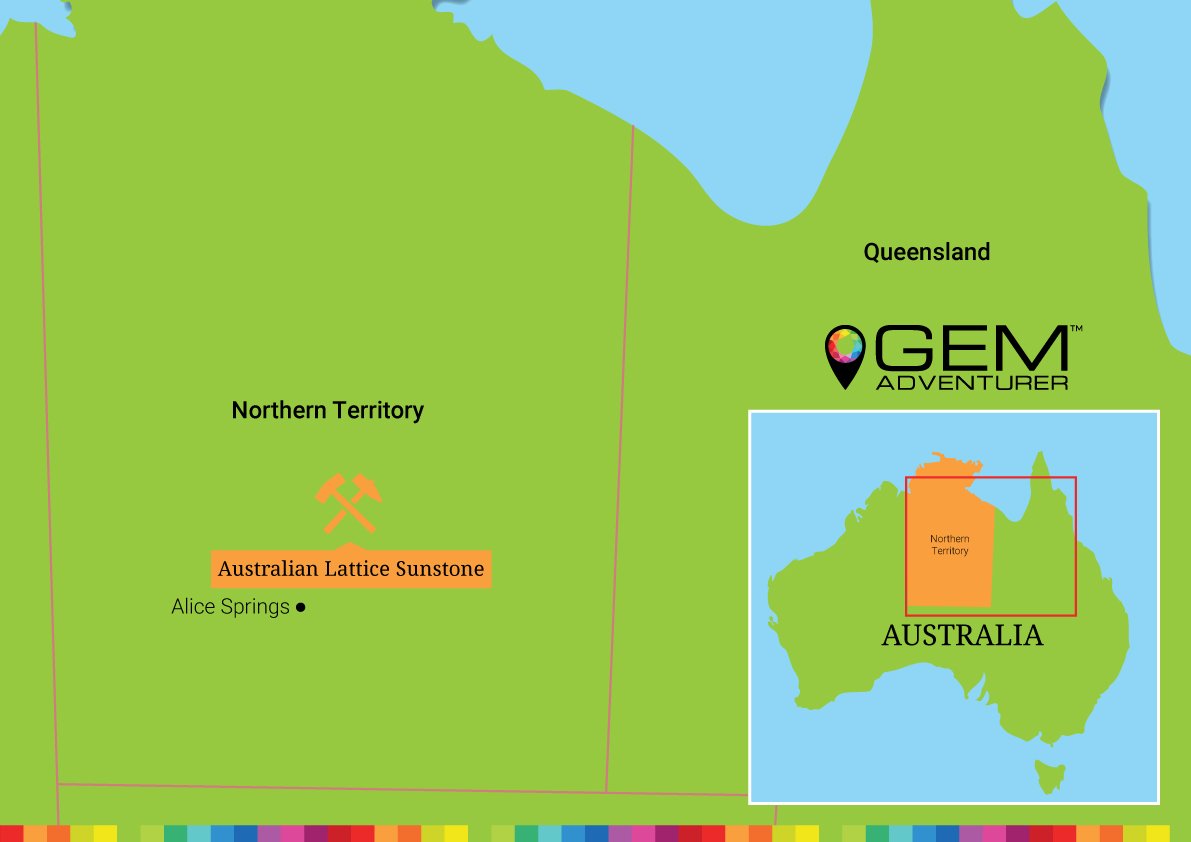
Click map to enlarge
